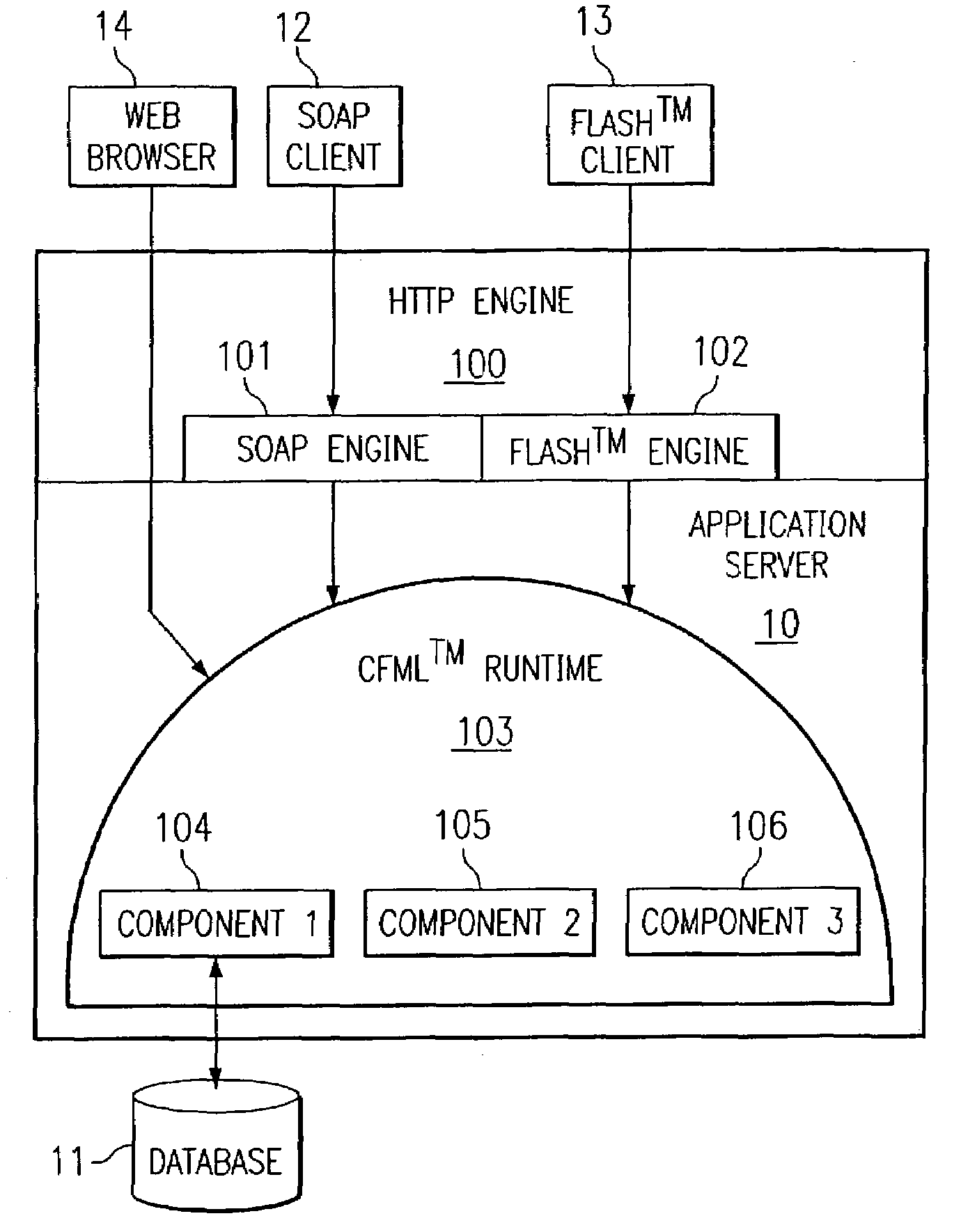Universal component system for application servers
a technology of application servers and components, applied in the direction of program control, interprogram communication, multi-programming arrangements, etc., can solve the problem of unfavorable component use, and achieve the effect of simplifying the entire development and implementation process and facilitating component self-description
- Summary
- Abstract
- Description
- Claims
- Application Information
AI Technical Summary
Benefits of technology
Problems solved by technology
Method used
Image
Examples
Embodiment Construction
[0028]FIG. 1 is a high-level block diagram illustrating an embodiment of an application server configured consistently with the teachings herein and shows an overall architecture of how clients of various different types, are able to access components 104, 105, and 106 running on application server 10. For purposes of explanation, application server 10 may be programmed using MACROMEDIA'S COLDFUSION™ and CFML™. Thus, components 104, 105, and 106 would preferably be running within CFML™ runtime 103. The different clients, SOAP client 12, FLASH™ client 13, and Web browser 14, are exemplary clients that may access the Website running within application server 10. Application server 10 is made up of several different layers. Hyper-text transfer protocol (HTTP) engine 100 is the first layer providing a standard transfer protocol and interface with the Internet. From HTTP engine 100, the format / protocol of the particular client dictates the next step or layer within application server 10....
PUM
 Login to View More
Login to View More Abstract
Description
Claims
Application Information
 Login to View More
Login to View More - R&D
- Intellectual Property
- Life Sciences
- Materials
- Tech Scout
- Unparalleled Data Quality
- Higher Quality Content
- 60% Fewer Hallucinations
Browse by: Latest US Patents, China's latest patents, Technical Efficacy Thesaurus, Application Domain, Technology Topic, Popular Technical Reports.
© 2025 PatSnap. All rights reserved.Legal|Privacy policy|Modern Slavery Act Transparency Statement|Sitemap|About US| Contact US: help@patsnap.com



